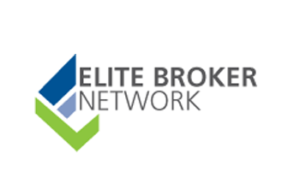I always tell my clients there are only three things in life you can count on death, taxes, and change on a construction project.
This can literally save you hundreds of thousands (perhaps millions) of dollars and endless heartaches. Here are three recent eye-opening architectural risk examples detailing the three major risks for architects/engineers in which disputes, delays, or costly changes were avoided or COULD have been avoided.
EYE-OPENING STORY #1: Too early to order project material?
One of my architect clients recently designed a project requiring a large amount of steel. The owner was concerned that threatened tariffs might be imposed if they waited too long to purchase the steel and significantly drive up the cost. The owner wanted to order steel immediately while the schematics were being completed.
This may have SEEMED sensible, but my client recognized how risky it was, potentially leading to huge waste, and heavy losses, not to mention hassles for the owner, contractor, and design team. The chances of the plans remaining unaltered through the end phase of design are about the same as a snowball’s chance in…well, you get my drift.
If the plans had changed (which they did), some or all of the steel they ordered could not have been used. Retrofitting, correcting, or ordering the required material would have led to significantly more cost and complexities. In addition, veering even slightly from the design (no matter how tempting) can have disastrous consequences.
In short, ordering the material in the first phase might have saved a few bucks, but this would have led to a catastrophe. It’s the ultimate “pennywise pound foolish.”
And who would the owner blame? Everybody’s favorite scapegoat; the Architects and Engineers.

In these types of scenarios, I always tell my clients two magic words: BE TRANSPARENT. Explain the pros and cons to the owner in a respectful, positive, yet firm way. You’d be amazed how many clients will embrace you as the voice of reason when you show full transparency and make it clear that your number one concern is protecting THEIR best interest.
EYE-OPENING STORY #2: Dallas Bridge Is Falling Down
Over the past several years, a new pedestrian and bike bridge over the Trinity River in Dallas has been the subject of a huge dispute.
The problem? Rods in the cables that hold up the bridge have been cracking. The contractor has been in a heated dispute with the city over who should pay for the repairs, with the “Starchitect” caught in the crossfire. According to the Dallas Observer, “The cable parts have failed in high winds, tests were not conducted as originally required, and an adjustment rod was made of thinner material than called for in the original design.”
How did this happen? According to the paper, the project got more expensive than initially estimated (shocker!), so the city pressured the contractor to ‘value engineer’ the bridge–which is a fancy term for “cutting corners.” The amazing thing is, that the architect repeatedly urged the city to conduct the proper tests and even offered to lend it money to pay for it! Yet they didn’t listen.
Could this have been avoided? It’s hard to know. It seems like a textbook case of “cutting corners”. The Contractor may have been planning to blame the architect, but it was the Contractor who didn’t say “No.” Either way, situations like this can be tough to avoid.
With that said, I always implore clients to do their due diligence. Try to work exclusively with contractors you trust and, ideally, someone you’ve worked with multiple times in the past. Have a sense of conviction should a stakeholder request a change.
I know this may be easier said than done. Just keep in mind anticipating engineering negligence examples and risks is probably the number one factor in protecting your reputation, avoiding lawsuits and disputes, and ensuring you minimize your risk.
EYE-OPENING STORY #3: A city (allegedly) refuses to pay
A St. Louis-based interior design firm was owed an outstanding $110,000 for a renovation they designed for the city of Belleville City Hall, the conversion of a bank into the police headquarters.
The city refused to pay, and the firm agreed to reduce the asking price to $90,000. They still didn’t get paid and were ultimately forced to accept $72,000 to end the dispute.
Part of the reason the city was upset was because the project was supposed to be completed in January 2017, but was not finished until the following September.
The city made two claims:
The architect who originally led the design team was removed mid-project, which the city claimed led to significant delays.
Although the city initially ordered a specific window shade, they later changed their mind and requested a different style. By that time, the design firm had already purchased the shades, but the city still refused to pay for them, forcing the firm to swallow $20,000, the cost of the shades.
Although it’s hard to attribute blame without knowing all the details, the bottom line is this: the architect lost $38,000 and seemed to have little recourse.
Could this messy scenario have been avoided? How would you have handled it? What do you think can be done in the future to avoid this type of dispute?
Please leave a comment below sharing your thoughts on how to avoid nasty disputes and loss of profits (or feel free to share anything else on your mind).
In my next Risks for Architects post, I’m going to tell you the advice I give MY clients to help avoid disputes like these and give yourself the maximum chance of getting paid in full.
When you are ready, here are five ways I can help you mitigate these risks…
- Download your free A/E Consumer’s Guide. [Click Here]
- Would you like me or a member of my team to WOW your organization with a presentation? Reply to this email and put “Speak” in the subject line.
- Book a free 30 minute call to get to know us. [Click Here]
- Provide you with a professional liability proposal upon renewal. [Click Here]
- Subscribe to my YouTube channel.
973-564-9330


